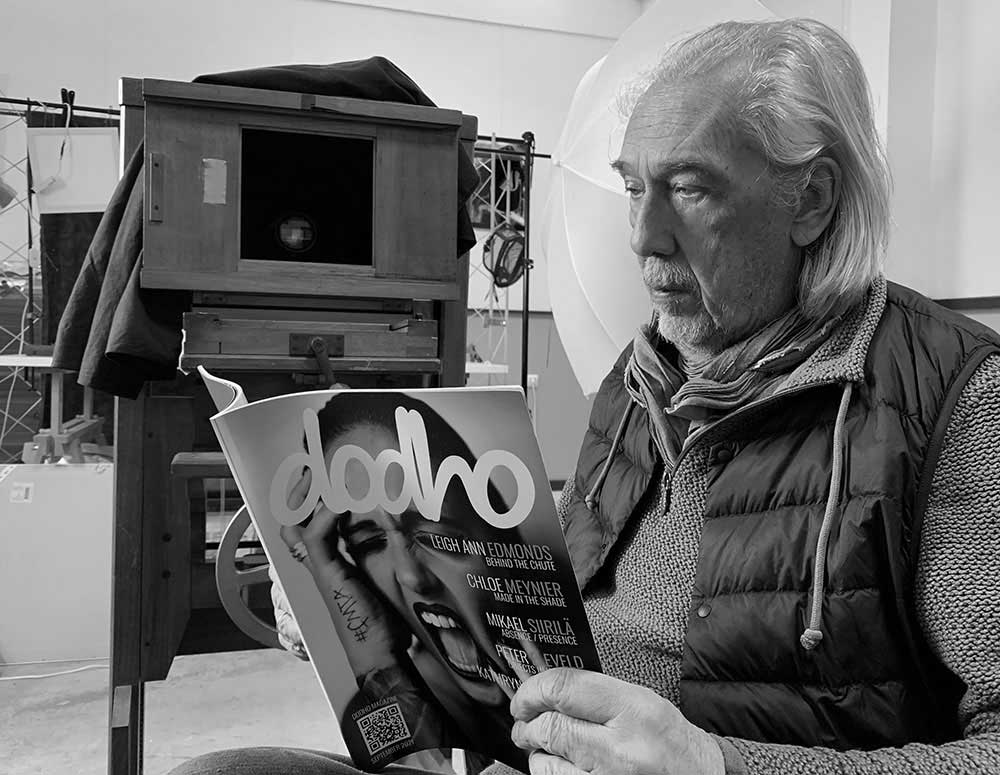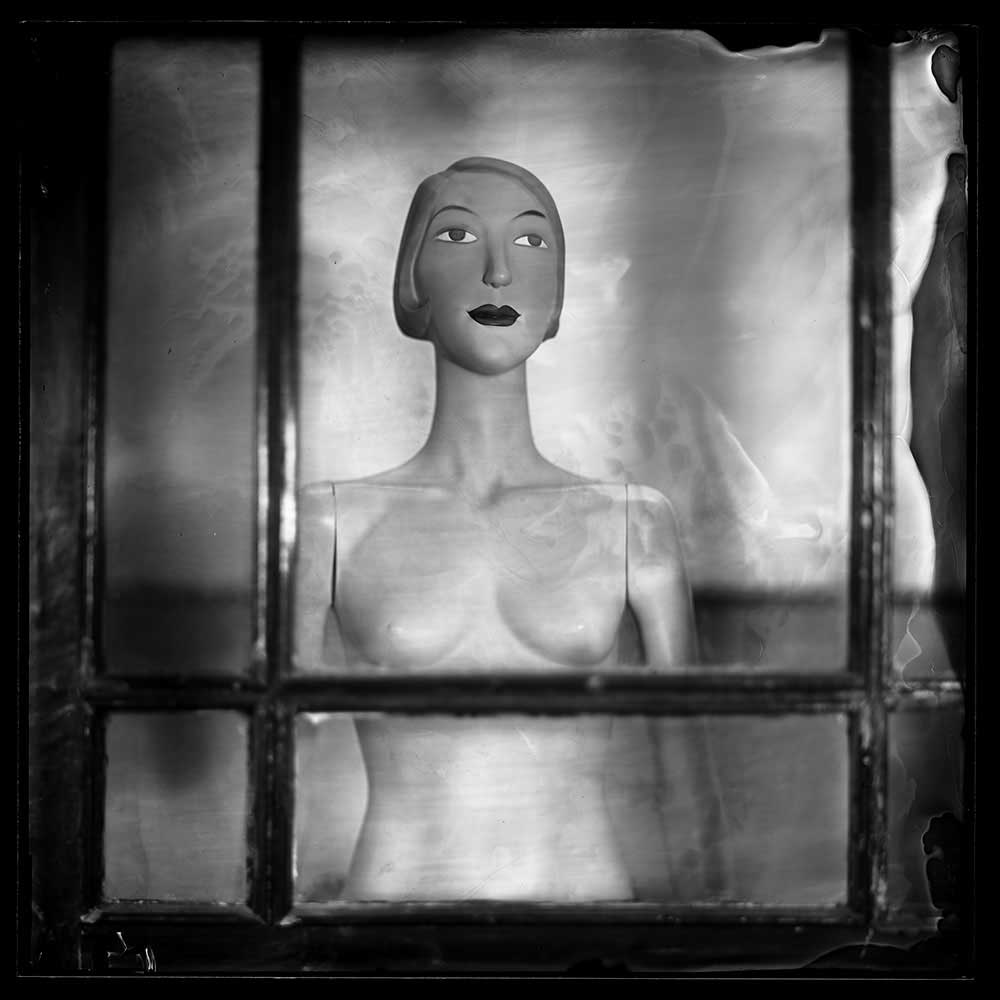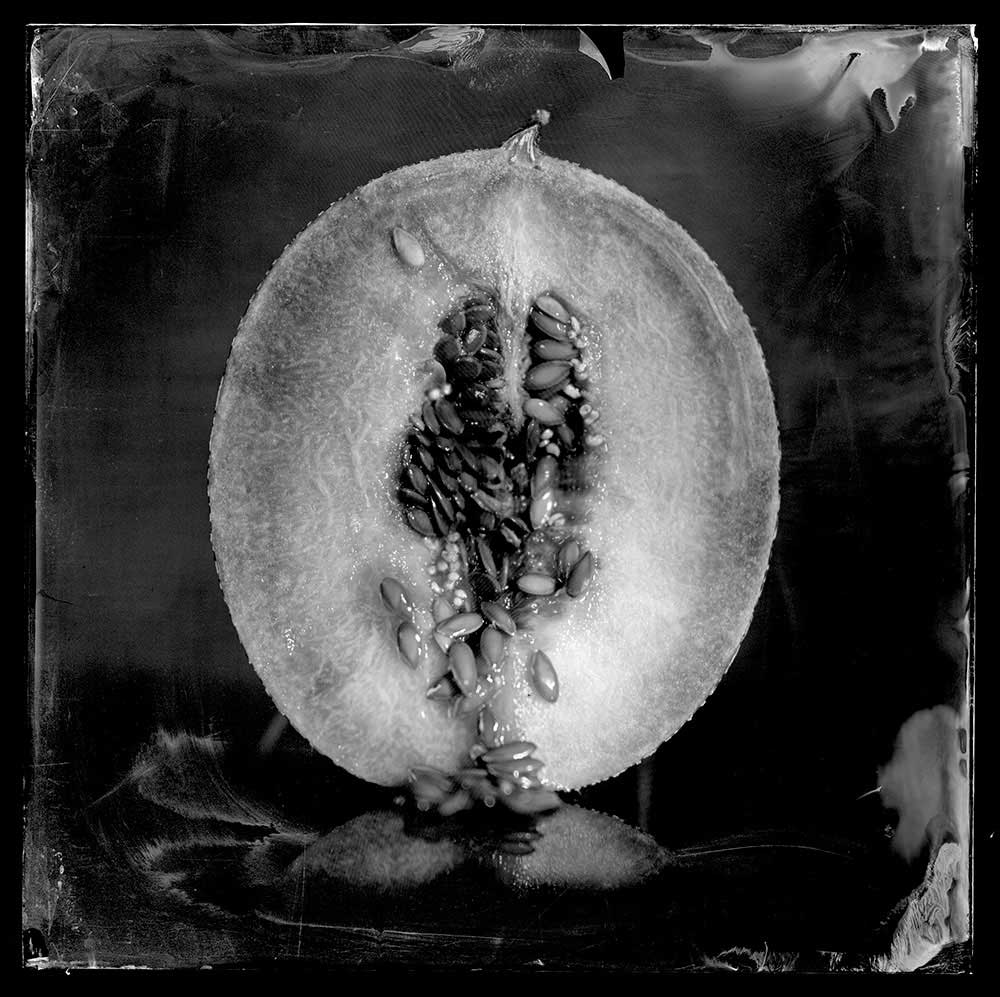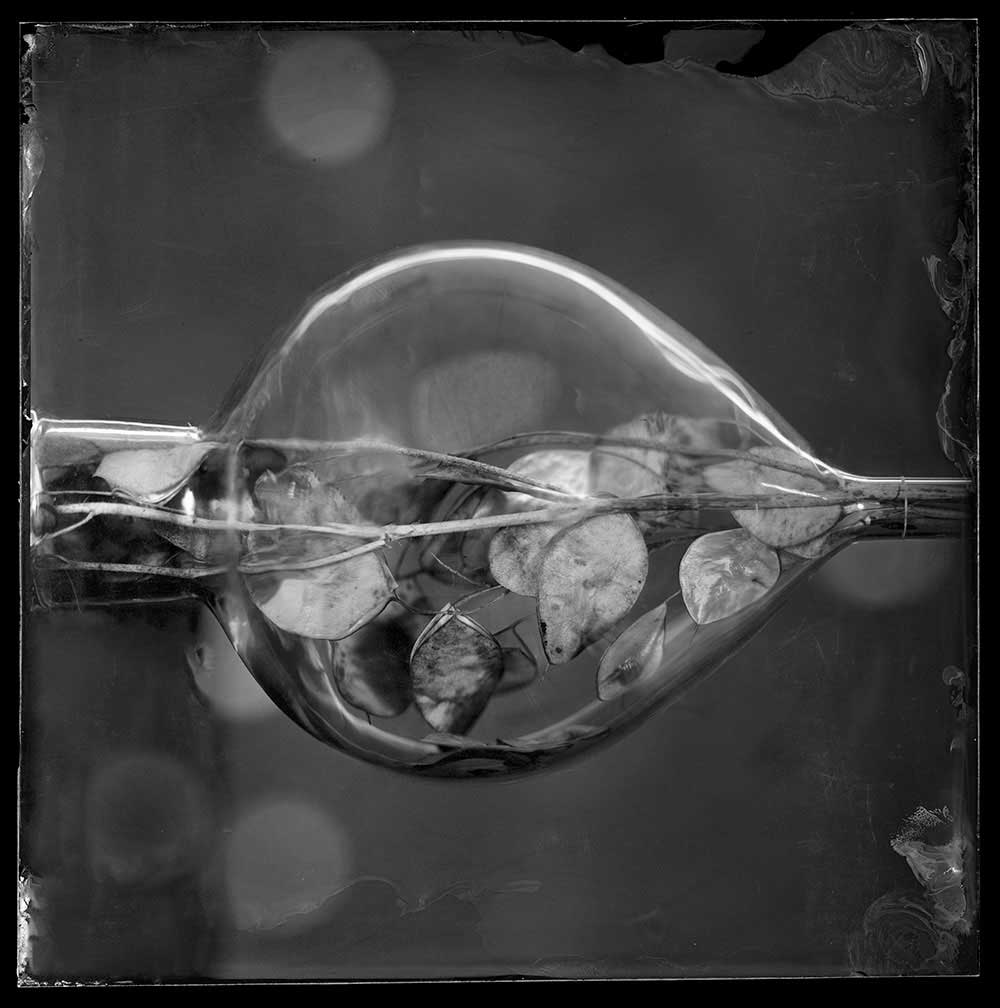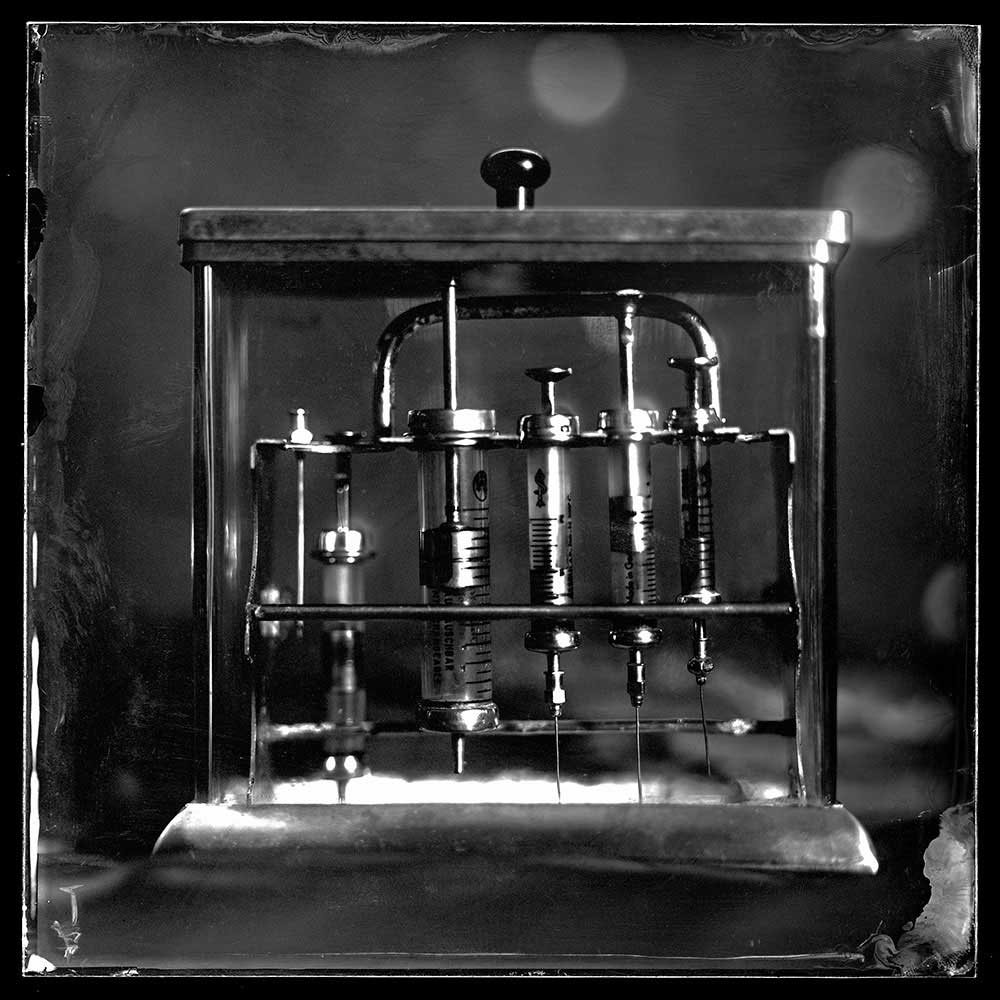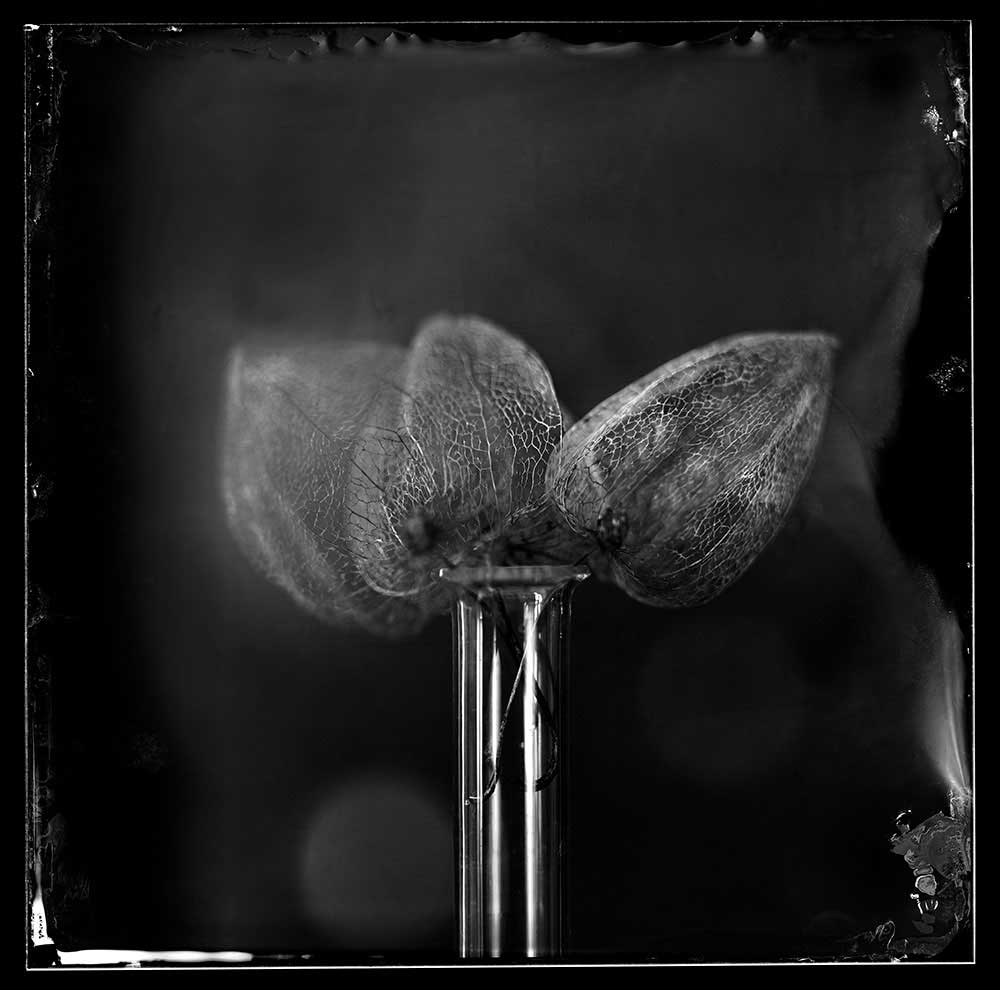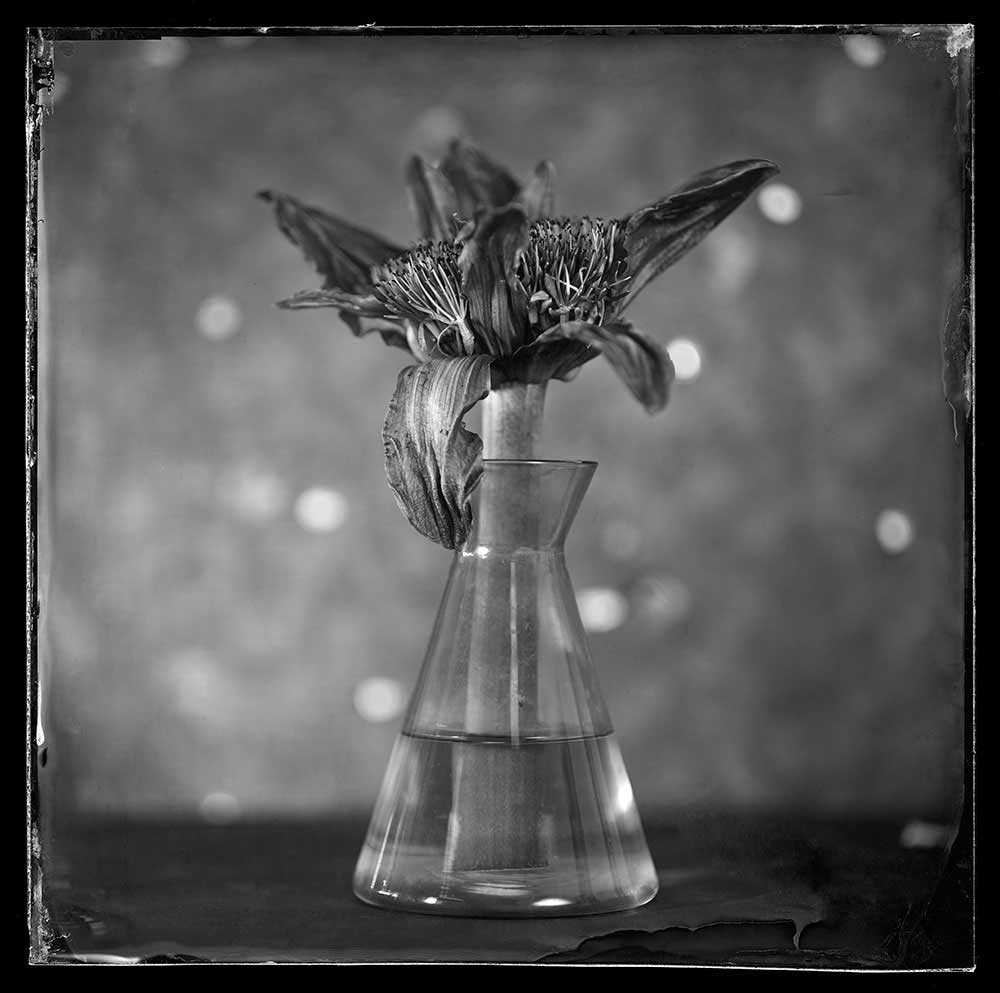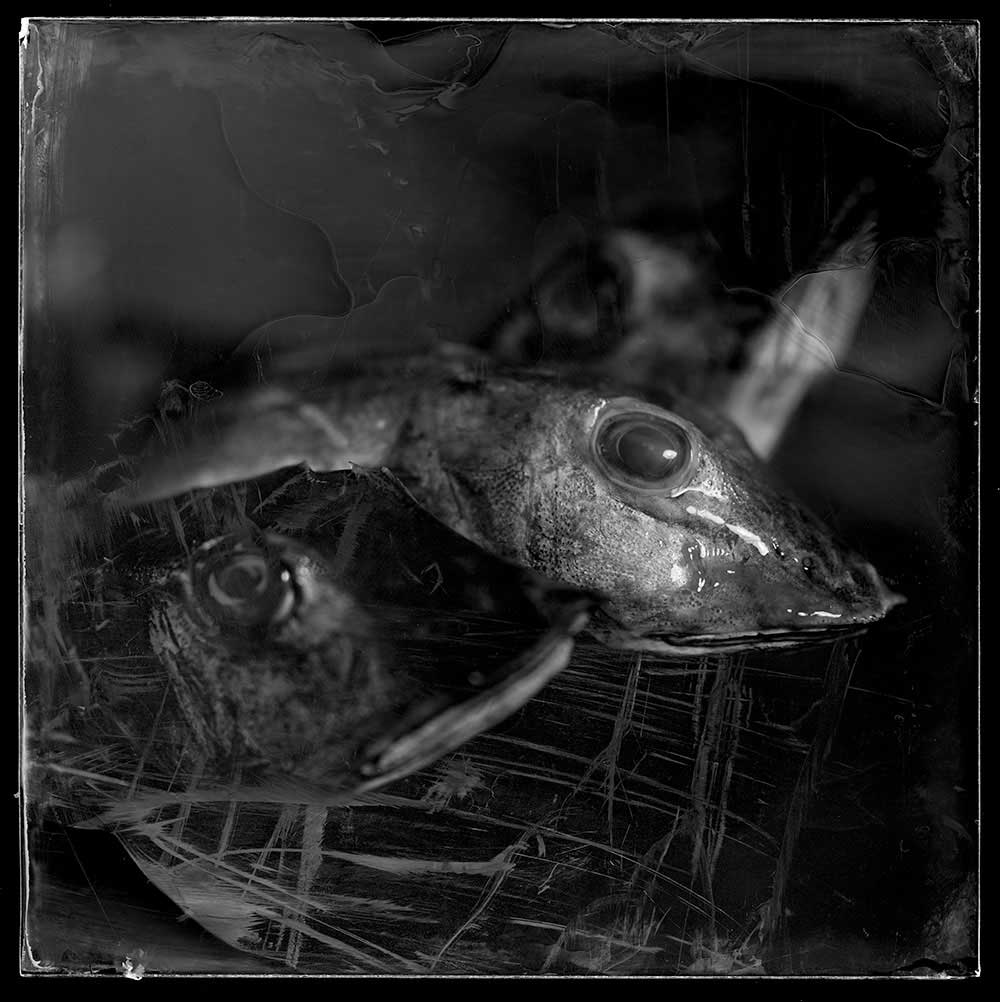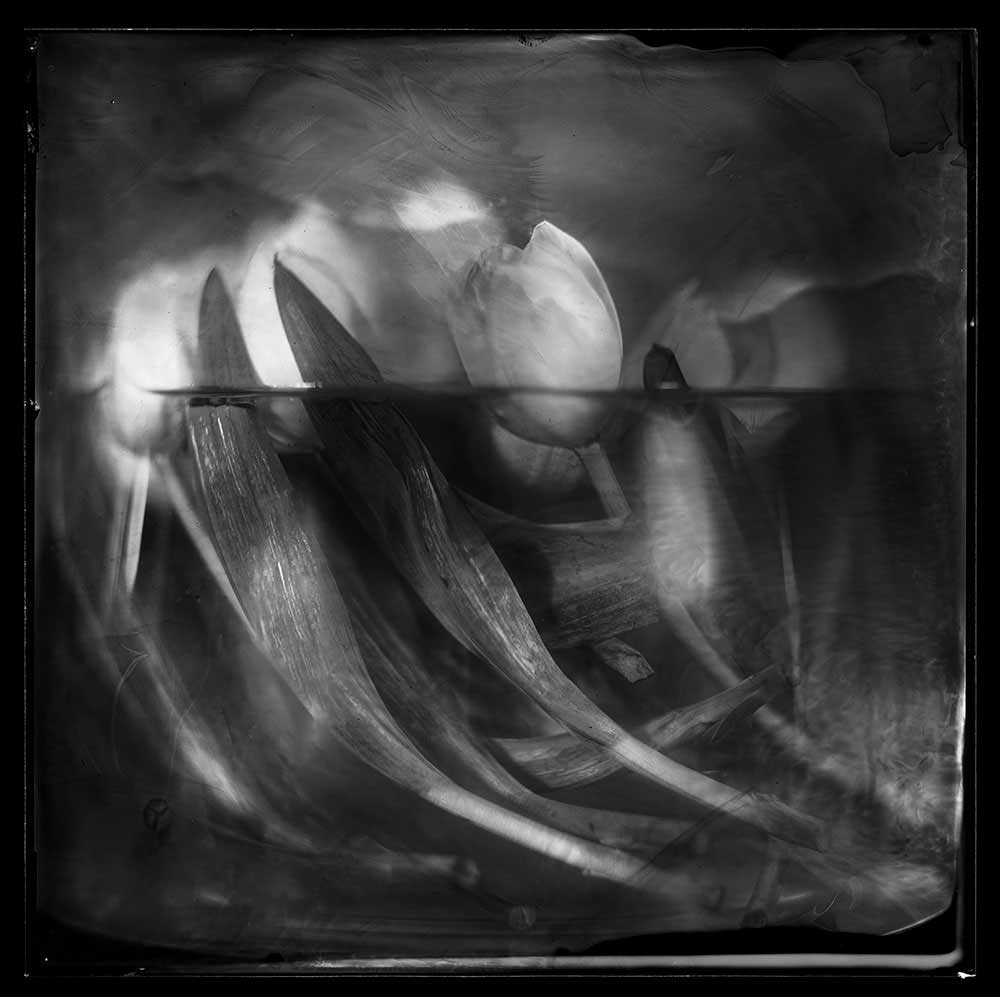Dodho Magazine had the chance to interview Peter Eleveld about his exquisite series Objects in Wet Plate.
We get to know more about his process of work, and he kindly gives us some advice in case we were interested in trying the Wet Plate process. [Official Website][Printed Edition][Digital Edition]
In the description of your work process for “Objects in Wet Plate”, we can read that the first step is you create an image in your head from everyday life, as a surrealist cycle. Could you explain a bit more about these mind visuals that you get and if there are differences if the inspiration comes during the day or at night?
The artworks are just objects out of daily life, such as glassware, fruit, and nature. I notice them and create an image in my head. This happens during the day or I create when I am sleeping. In the morning I grab my iPad and sketch them out. Then I will try to re-create them in a studio set-up. With the Wet Plate process, I turn those ordinary items into extraordinary images.
How would you explain the wet plate technique to someone that would like to explore it? Which piece of advice would you give from your experience?
If you are thinking to start using the WetPlate process, think again! Start with good research, YouTube is a good place to discover how it all works. Find a good WetPlate camera (13×18 cm) with fitting WetPlate cassettes. There are many steps in the process, cutting the glass, mixing the collodion, mixing the developer, etc. Always use gloves and protect your eyes. Silver nitrate is dangerous and will stain everything.
Being photography your passion, in 2014 you did a big and brave change in your professional life from working for big companies to being a freelance photographer. I really admire this decision. What was missing before this move, and what new positive things have you got since then? Tell me about what has changed.
Nothing was missing, just had enough of the fast product photography and wanted to be more creative and my own boss!
In “Objects in Wet Plate” I can see some influences from Man Ray and Robert Mapplethorpe, both the dark and elegant features, even the dreamlike quality. I wonder which artists do you admire, and which ones do you consider have influenced your style and works?
I don’t take inspiration from other photographers, but I do appreciate work from photographers like Erwin Blumenfeld, Diane Arbus, Brassaï en David LaChapelle
Your work has received praises and recognition, from numerous prestigious photography awards to multiple features in international magazines. How do you feel about this acknowledgment from the critics and experts in this field?
It’s great to be recognized with my WetPlate photography! It also provided me with international exposure and could make contact with Gallery’s who are interested to exhibit my work.
Having a Twitter, Instagram, and Facebook account, how is your relationship with social networks? Have you met other artists and clients through them?
I am using Twitter, Instagram, and Linkedin (not Facebook), Instagram works very well for me. I am getting regular orders from people who want to purchase my work.
Among the different types of photography, which ones have you felt more into? If you had to describe your work as a whole, would you fit into some categories?
Possible, Still Life photography and Portrait photography. I think you can place my work in the category of contemporary photography/fine art.
Many artists and creators show in their works some influence from the place they are from or they feel they belong to. Do you feel a special connection to your country or hometown? Does your photography reflect part of the culture of your country? How has your creative processes, and also your relationship with people changed from the work you did with the big companies to the one that you are doing these days in the studio?
My work has no connection with the Netherlands, I could make my work anywhere! The studio is my own studio, also functions as a Gallery. My work for the big companies was always as a manager/photographer in the high-end product photography.
Seigar
Seigar is a passionate travel, street, social-documentary, conceptual, and pop visual artist based in Tenerife, Spain. He feels obsessed with the pop culture that he shows in his works. He has explored photography, video art, writing, and collage. He writes for some media. His main inspirations are traveling and people. His aim as an artist is to tell tales with his camera, creating a continuous storyline from his trips and encounters. He is a philologist and works as a secondary school teacher. He is a self-taught visual artist, though he has done a two years course in advanced photography and one in cinema and television. His most ambitious projects so far are his Plastic People and Tales of a City. He has participated in several international exhibitions, festivals, and cultural events. His works have been featured in numerous publications worldwide. His last interests are documenting identity and spreading the message of the Latin phrase: Carpe Diem. Recently, he received the Rafael Ramos García International Photography Award. He shares art and culture in his blog: Pop Sonality.



